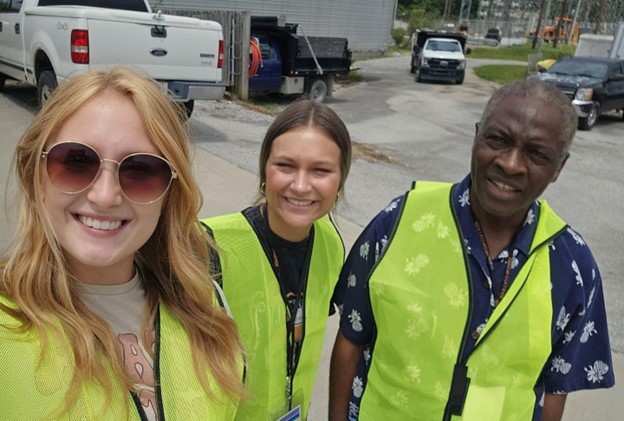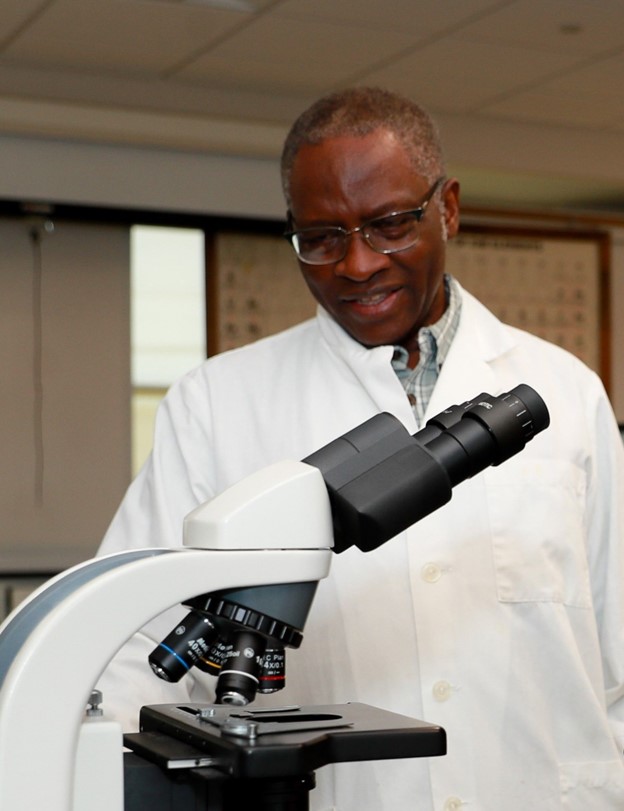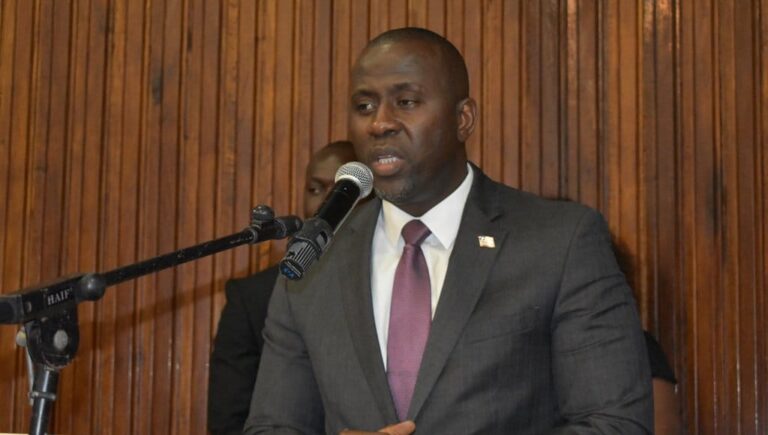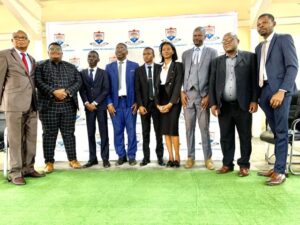“We wanted to know how extensive this was,” Fidelis says.
In the French zone, where raffia palms are common, RTMs are well-known because the rotting bark of this species makes an excellent habitat for these larvae. When Fidelis learned this, he worked with local people to collect RTMs from the palms. He was able to preserve many samples and also grew some adult flies from the larvae, which he also preserved.They were beginning to think they would never actually find RTMs, when on June 21, they decided to return to the garbage transfer station where they had previously found regular tail-less maggots writhing in the shallow puddles of leakage from compacted trash. It was a sunny day after a spell of rain, and they thought maybe, just maybe, with more of that foul water sitting around, they’d have a better chance of finding their prized maggots.
The three of them were crouching over a muddy puddle beside a dumpster, wearing the fluorescent yellow vests they’d been advised to wear for safety, when, after stirring up the water a bit with a stick, the long sought-after RTMs wriggled up to the surface.
 The team's first sighting of RTMs in Appalachia[/caption]
“Once we have good samples of all the life phases, we will send them to an entomology lab to do the systematics,” he says. “This means we will see which flies are really responsible for this in terms of genomes, in terms of, family, and so on.”
At the conclusion of their summer research, Hannah and Laurel created a presentation of their findings. They shared this at Union as well as at Lee University's McNair-Ledford Undergraduate Research Symposium this semester. This was the first time the Lee Symposium had been open to Ledford Scholars, so this part of the project was a new experience for both Hannah and Laurel.
“It was a really good experience to learn how to make a poster like that and present it to different judges and answer questions about our work,” Hannah says.
“Even learning how to prepare a proposal and how to build relationships with colleagues have really helped me,” Laurel says of her combined experiences with Ledford.
The team's first sighting of RTMs in Appalachia[/caption]
“Once we have good samples of all the life phases, we will send them to an entomology lab to do the systematics,” he says. “This means we will see which flies are really responsible for this in terms of genomes, in terms of, family, and so on.”
At the conclusion of their summer research, Hannah and Laurel created a presentation of their findings. They shared this at Union as well as at Lee University's McNair-Ledford Undergraduate Research Symposium this semester. This was the first time the Lee Symposium had been open to Ledford Scholars, so this part of the project was a new experience for both Hannah and Laurel.
“It was a really good experience to learn how to make a poster like that and present it to different judges and answer questions about our work,” Hannah says.
“Even learning how to prepare a proposal and how to build relationships with colleagues have really helped me,” Laurel says of her combined experiences with Ledford.
“They are happy with their work,” Fidelis says. “We have found something very useful.”
While RTM infestation is mostly a health concern for those who do not have access to clean drinking water, children and animals are always at risk because they may play in and drink out of mud puddles or other contaminated areas. Raising awareness of RTMs’ existence and their ability to hide at the bottom of deeper water due to their long respiratory “tails” could prevent unnecessary illness here in Appalachia as well as around the world. “From a medical standpoint, this was really interesting,” Hannah says, explaining that she will bring her new awareness of RTMs and her deepened understanding of parasitology into her future work with patients. [caption id="attachment_110128" align="alignnone" width="624"] Hannah and Laurel presenting at the Lee Symposium[/caption]
Fidelis says that once more is known about the maggots, there could be many applications of the knowledge, including creating antibiotics from their DNA or intentionally farming them to grow an inexpensive fish food. Mostly though, he is driven by scientific inquiry and the pursuit of knowledge for its own sake, a message he drives home to his students. “We are always learning,” he says.
Hannah and Laurel presenting at the Lee Symposium[/caption]
Fidelis says that once more is known about the maggots, there could be many applications of the knowledge, including creating antibiotics from their DNA or intentionally farming them to grow an inexpensive fish food. Mostly though, he is driven by scientific inquiry and the pursuit of knowledge for its own sake, a message he drives home to his students. “We are always learning,” he says.




 The Research Team onsite at the transfer station ,left to right Hannah Baker,Laurel Nolan,Dr Fidelis Achenjang.[/caption]
The Research Team onsite at the transfer station ,left to right Hannah Baker,Laurel Nolan,Dr Fidelis Achenjang.[/caption]
 Dr Fidelis Achenjang in Lab[/caption]
Dr Fidelis Achenjang in Lab[/caption]
 A sample of Fidelis's RTMs from Cameroon[/caption]
A sample of Fidelis's RTMs from Cameroon[/caption]


























